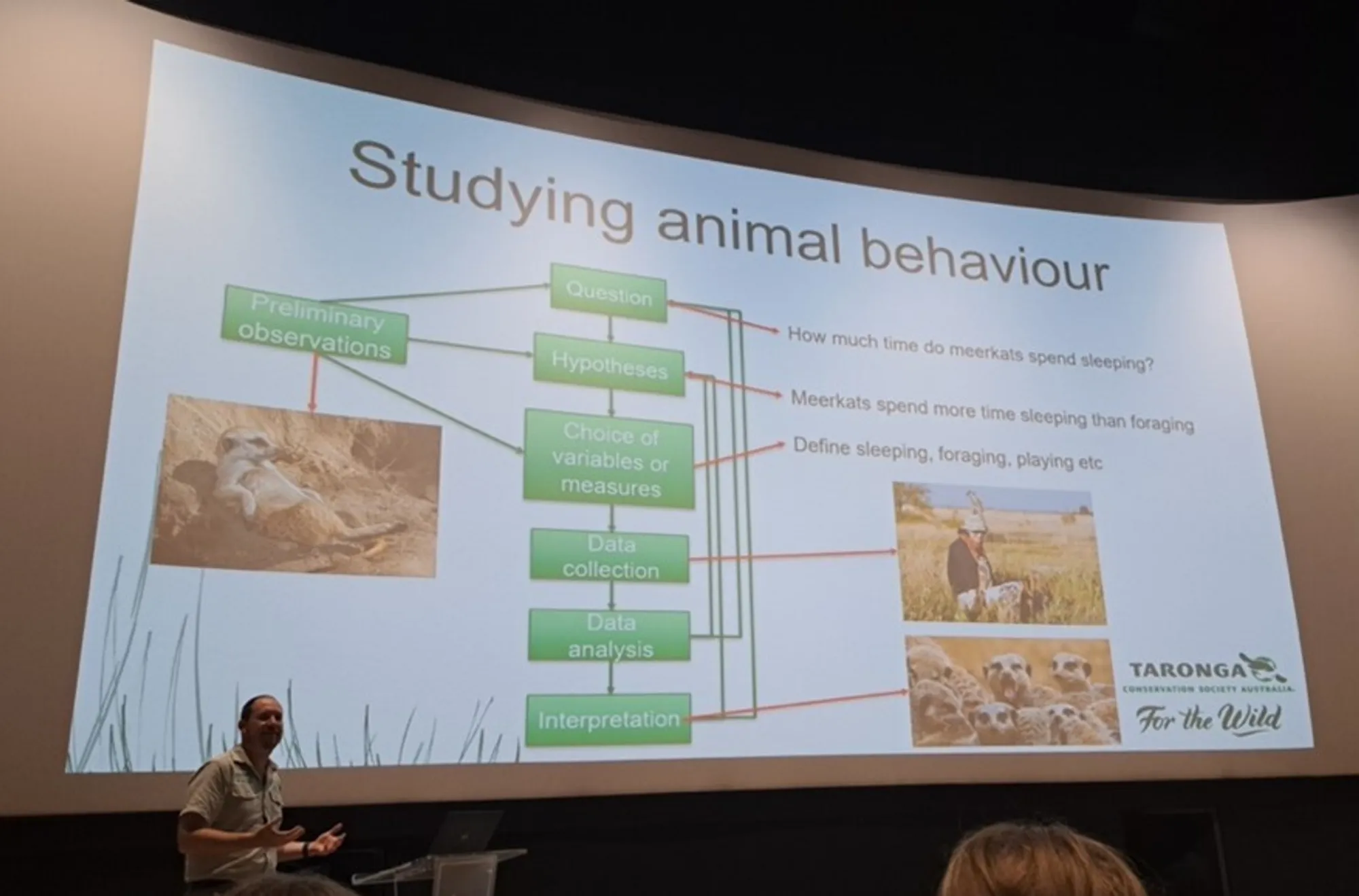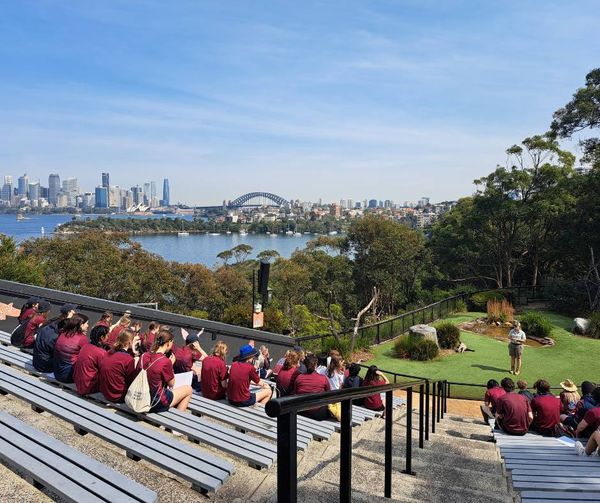Observing Animal Behaviour
Observing Animal Behaviour
By Mr Jack Chalker-Harris, Teacher
On Thursday, 21 September, our psychology cohort visited Taronga Zoo in Sydney. I know what you’re thinking – why on earth would psychology students be visiting a zoo?
Well, as it turns out, Taronga offers a program focused on conducting animal observations. Specifically, how observations can drive scientific research. This ties in nicely with our current topic of social psychology, in which observational research is a pillar.
Prior to our trip, students were tasked with creating templates to observe an animal of their choosing. From meerkats to chimpanzees, the range was broad, with the majority of students attempting to investigate the impact of captive settings on behaviour.
When we first arrived at Taronga, we made our way to the free-flight bird theatre, where we experienced an interactive presentation involving a young, red-tailed black cockatoo named Wattle. During this presentation, bird trainers demonstrated how they begin training birds by monitoring behavioural cues in each animal, which suggest how comfortable they are when performing certain tasks. Luckily for us, the free-flight theatre doubled as a beautiful view overlooking Sydney Harbour.
On the day, we also heard from Dr Ben Pitcher, a behavioural ecologist, about his latest project, in which he investigated penguin behaviour to better understand their feeding patterns. He talked us through the ways he collected the information and the process involved in collating and communicating his findings, which was extremely beneficial for our students.

Students then went out on their own to explore the zoo and investigate their chosen animal and their unique behaviours.
Overall, the day was a wonderful learning opportunity for our students, as well as a fun and enriching experience to connect socially; a win-win for all involved and something we as staff plan to keep in the program of learning moving forward.
Below is an example of a research poster students were tasked with creating after their visit. This one is courtesy of Genevieve Nguyen (Year 11), who undertook a comparative investigation of how chimpanzee behaviour differs in captivity versus the wild.

